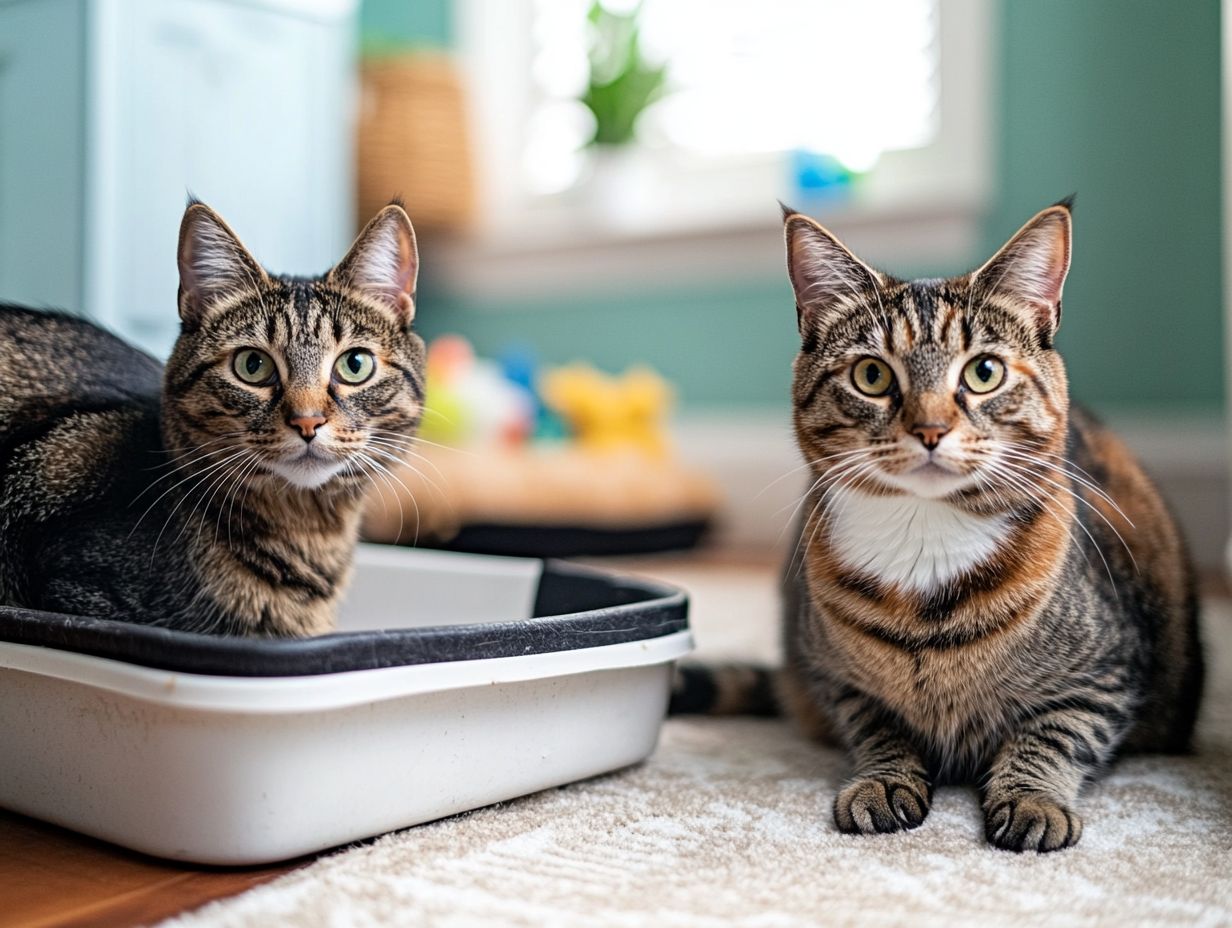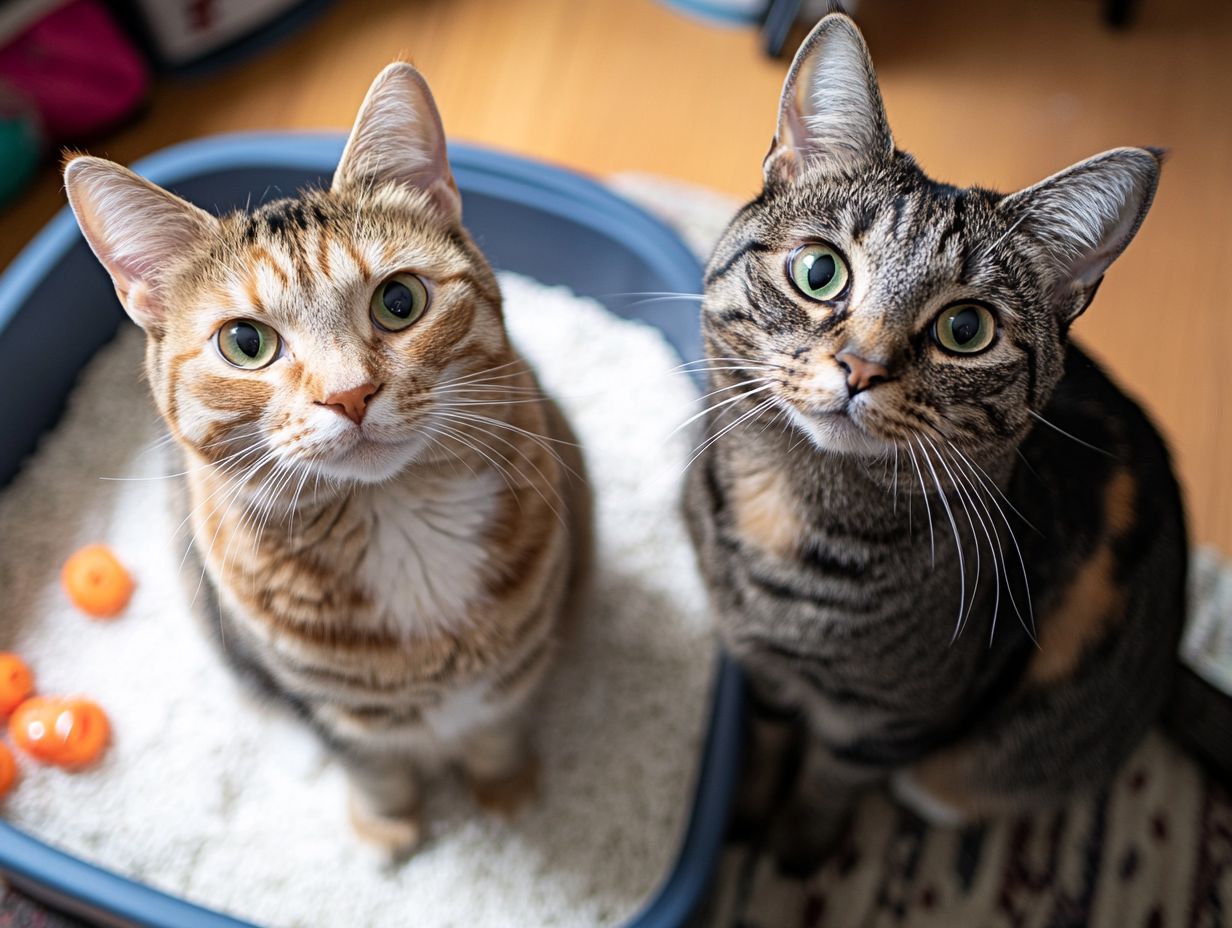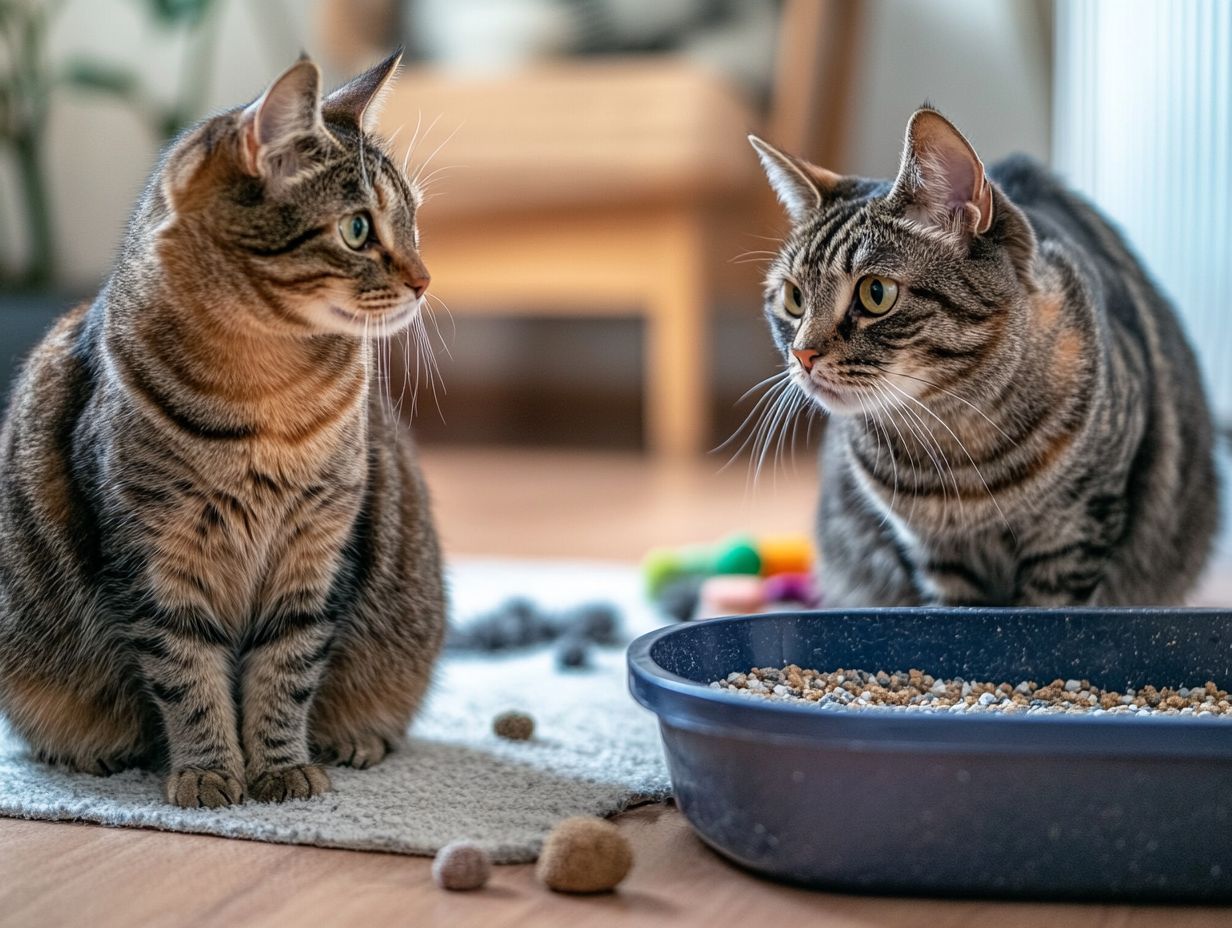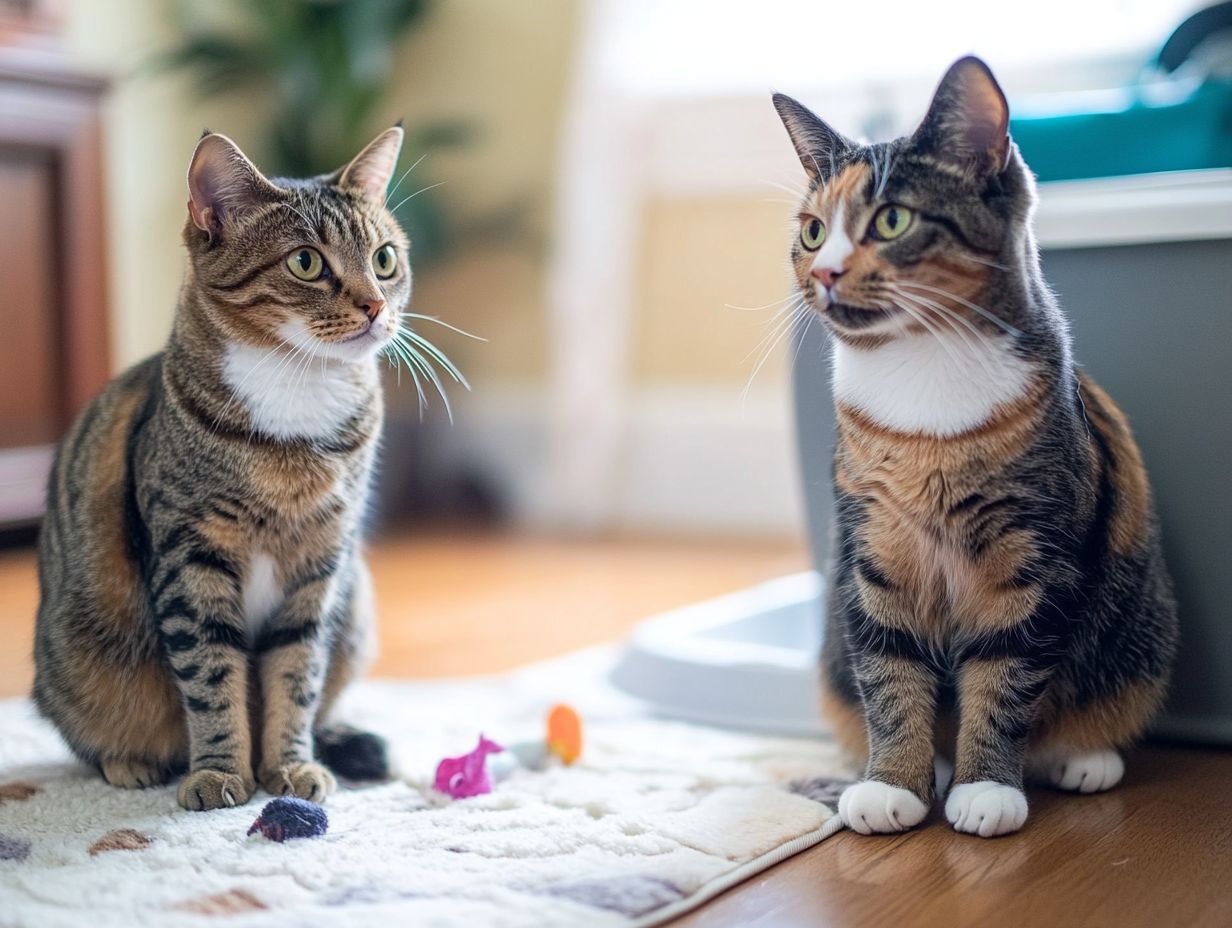In multi-cat households, providing multiple litter boxes is essential for your cats’ well-being. When cats are forced to share a litter box, it can lead to stress, fighting over territory, and behavioral issues. Cat owners must ensure each feline companion has access to a clean litter box to prevent such conflicts. According to veterinarians, a general guideline is to have one litter box for each cat, plus an additional box, to effectively manage territorial behavior.
This article explores the importance of providing enough litter boxes, factors to consider when determining the right number, and practical tips for introducing them to your cats. Insights from cat experts like Dr. Kelly Diehl and Stephen Quandt highlight the role of accessibility in reducing litter box conflicts. Studies have shown that adequate access to litter boxes can significantly decrease stress levels in cats, leading to improved health.
We discuss the best types of litter boxes for a harmonious home and how to resolve litter-related conflicts. Discover how to create a stress-free environment for your feline friends with multi-cat tips from Morris Animal Foundation experts!
Key Takeaways:

- Multiple litter boxes are essential for harmonious living among cats in a household, as they mitigate territorial behavior and stress.
- The recommended number of litter boxes is one per cat, plus an extra one, to effectively manage territorial behavior.
- Gradually introducing and keeping the litter boxes clean can help prevent conflicts between cats sharing a litter box, promoting better hygiene and reducing health issues.
Why is it Important to Have Multiple Litter Boxes?
In multi-cat households, providing multiple litter boxes is essential to accommodate the territorial nature of cats. Cats are naturally territorial animals, and having several clean litter boxes reduces the likelihood of stress and associated health issues related to urination, such as urinary tract infections.
For cat owners, creating an environment that supports this natural behavior enhances their cats’ hygiene and fosters a more harmonious living situation. Understanding the importance of litter box availability, as emphasized by veterinarians, is crucial for the overall well-being of cats.
What Happens When Cats are Forced to Share a Litter Box?
Forcing cats to share a litter box can lead to considerable stress and fighting over territory, adversely affecting their health and well-being. The stress of competing for bathroom access often manifests as increased aggression, which may result in fighting or marking. This competition can also lead to anxiety-related medical issues, such as urinary tract infections, which are extremely painful and require veterinary treatment.
Cat behaviorists typically recommend that owners provide multiple litter boxes—ideally one for each cat, plus an additional one—to minimize competition. Veterinarians generally support this advice, emphasizing that reducing stress through adequate access to litter boxes results in happier cats and decreases health complications.
How Many Litter Boxes Should You Have?
A general guideline for multi-cat households is to provide one litter box for each cat, plus an additional box. This ensures that all cats have consistent access to clean litter boxes.
Factors to Consider When Deciding on the Number of Litter Boxes
The number of litter boxes required in a household depends on several factors, including cat behavior, litter tracking, health monitoring, and accessibility. The layout and size of the home are crucial; larger homes may need more litter boxes to prevent territorial disputes among cats, as emphasized by cat behaviorists.
In households with multiple cats, a common guideline is to have one litter box per cat, plus one additional box. This arrangement accommodates the varying preferences cats have regarding litter box placement and helps reduce stress.
Health issues, such as urinary tract infections or arthritis, can also influence the number of litter boxes needed, as some cats may struggle to reach a box that is too far from their usual resting places. Experts recommend observing each cat’s usage of the litter boxes to tailor the quantity and positioning to meet their individual needs.
How to Introduce Multiple Litter Boxes to Cats?

When introducing multiple litter boxes, consider placing them in various locations throughout your home. This helps ensure that each cat can access a litter box without feeling threatened. It’s advisable to keep the boxes clean and to gradually introduce them to your cats by showing them where the new boxes are located.
Monitor your cats’ behavior during this transition. If you notice any signs of stress or reluctance to use a box, you may need to adjust the number or placement of the litter boxes. Remember, the goal is to create a stress-free environment for your feline friends.
In summary, providing multiple litter boxes is essential for a harmonious multi-cat household. By observing your cats’ behavior for any signs of stress or health issues related to litter box access, you can ensure their well-being. Implementing these tips can help create a happier and healthier home for your furry companions.
Introducing multiple litter boxes into your home is a process that demands patience and an understanding of cat behavior to ensure a smooth transition for your cats. For more information, check out this expert advice on how cats can share a litter box.
2. Placing Litter Boxes in Different Locations
Placing litter boxes in various locations enhances accessibility and caters to your cats’ preferences, contributing to a more cat-friendly home environment. Strategically positioning these boxes creates a comfortable atmosphere for them.
Look for areas that offer privacy, such as spots away from household noise and high foot traffic. Litter boxes situated in corners or in low-traffic rooms can significantly reduce stress for your cats.
It is advisable to have multiple boxes spread across different levels of your home, especially if you live in a multi-story house. Cat behaviorists recommend that ensuring adequate space and privacy not only encourages optimal use of the boxes but also helps prevent litter box refusal.
By observing your cats’ habits and preferences, you can identify the best locations for them to feel safe and content while relieving themselves.
3. Ensuring the Litter Boxes are Clean
Maintaining clean litter boxes is crucial for cat hygiene and overall feline health, as dirty litter boxes can cause stress that may lead to other health issues. Research from veterinarians indicates that approximately 30% of cats may refuse to use a dirty litter box, which can result in behavioral problems and even urinary tract infections.
Experts recommend using clumping, unscented litter, such as PrettyLitter, which absorbs moisture and facilitates daily waste removal. PrettyLitter is known for its health-monitoring properties, changing color to indicate potential health issues. However, some cats may not prefer the texture. The litter should be completely changed once a week, and the box should be cleaned regularly with non-toxic cleaners like vinegar and baking soda to prevent bacterial buildup.
Additionally, monitoring changes in a cat’s litter box usage can serve as an early warning sign of potential health problems, enabling timely veterinary intervention.
What Type of Litter Boxes are Best for Multi-Cat Households?
The type of litter boxes used in multi-cat households is crucial, as it impacts both the hygiene of the cats and their willingness to use them.
1. Covered vs. Uncovered Litter Boxes
Covered litter boxes may be better suited for some cats, particularly those that value privacy. In contrast, uncovered boxes might appeal to cats who prefer an open design, which caters to their natural instincts. For example, timid cats often benefit from covered boxes that provide a sense of security, while more social cats may prefer uncovered options.
Each type of litter box has its own advantages and disadvantages, and understanding how these factors influence cat behavior can help cat owners make informed choices. Key considerations include odor control and ease of cleaning. Covered litter boxes can help trap odors, making them less noticeable and appealing to both cats and humans. However, uncovered litter boxes are easier to clean and allow for better airflow.
2. Self-Cleaning Litter Boxes

Self-cleaning litter boxes are a modern and practical solution for multi-cat households. They significantly reduce maintenance effort and help ensure that cats use the litter box effectively. These devices are particularly beneficial for cat owners who struggle to keep up with regular cleaning chores, as they can save several hours of maintenance each week. With the cleaning process automated, cat owners can dedicate more time to bonding with their pets rather than maintaining their environment.
However, while self-cleaning litter boxes offer considerable convenience, there are trade-offs to consider. One factor is cost; these automated options are generally much more expensive than traditional litter boxes. Additionally, their effectiveness may vary depending on each cat’s individual habits and preferences. Experts suggest that some cats may be resistant to using a self-cleaning device, which could lead to litter box aversion.
Choosing the Right Litter
When selecting litter for your cats, consider various types such as clumping, biodegradable, and crystal litters. Clumping litters are popular for ease of cleaning, while biodegradable options are environmentally friendly but may not absorb odors as well. Crystal litters offer excellent odor control but can be uncomfortable for some cats. Understanding your cats’ preferences is key to selecting the best litter.
Tips for Successful Litter Box Training
To resolve common litter box issues like refusal to use a box, start by ensuring the boxes are clean and in suitable locations. Gradually introduce new boxes and observe your cats’ reactions. If a cat shows signs of aversion, consider adjusting the box type or litter used. Patience and understanding of your cats’ behavior can lead to successful litter box training.
Conclusion
In summary, providing multiple litter boxes, ensuring their cleanliness, and choosing the right type of litter are essential steps for cat owners, especially in multi-cat households. By paying attention to your cats’ habits and preferences, you can create a comfortable and hygienic environment that promotes good litter box usage.
Are you struggling with litter box issues in your multi-cat household? Choosing the right litter box is crucial as it promotes cat health and behavioral stability. Therefore, it is essential for every owner to weigh the convenience against the additional cost and the potential for behavioral issues before making a decision.
3. Top Entry Litter Boxes
The advantages of top-entry litter boxes include reducing the amount of litter that ends up outside the box and offering a unique solution for cats that prefer a more enclosed space. These boxes promote cleanliness, which is an important factor to consider when choosing a litter box, particularly in multi-cat households where managing mess is crucial. The elevated entry point with high walls also discourages dogs from digging through the litter, while the covered design aids in odor control. Additionally, most top-entry boxes are constructed from sturdy, easy-to-clean materials and feature elegant designs that complement home decor. Brands like **Modkat** and **PetFusion** are well-reviewed options that cat owners appreciate.
However, there are some drawbacks to top-entry litter boxes. Some cats, particularly senior or less agile ones, may struggle to access the higher entry point, which could discourage them from using the box. Ensuring a low entryway can help these cats maintain their hygiene and comfort.
How to Deal with Litter Box Conflicts between Cats?
An effective strategy for resolving litter box conflicts between cats involves understanding feline behavior and addressing the underlying causes of these conflicts.
1. Adding More Litter Boxes
The most effective way to address litter box problems is to provide additional litter boxes to accommodate all the cats in the household. Experts, including cat behaviorists and veterinarians, often recommend having at least one litter box for each cat, plus one extra, as the American Association of Feline Practitioners suggests, to help prevent territorial disputes and monitor feline health.
For instance, in homes with multiple cats, adding extra boxes can minimize conflict, as no single cat will feel the need to claim a limited resource. This approach leads to happier cats and promotes healthier bathroom habits and stress reduction, allowing each cat to use a box when needed without feeling pressured to wait.
Imagine a situation where one cat is in the box while the others anxiously wait outside; providing sufficient boxes alleviates this stress.
2. Using Different Types of Cat Litter
Using various types of cat litter can accommodate individual cat preferences and help minimize litter box disputes in multi-cat households. Understanding how cats react to different litter materials is essential for ensuring their comfort and meeting their hygienic needs.
- Clumping Clay Litters: Absorb moisture well, simplify clean-up, but may produce dust.
- Biodegradable Options (Corn, Wheat): Natural feel, less dust, but may require more frequent changing.
- PrettyLitter: Changes color to indicate potential urinary tract infections, providing a health monitoring feature.
Observing these behaviors not only fosters a more harmonious environment but can also alleviate stress-related issues, contributing to healthier and happier animals.
3. Providing Enough Space between Litter Boxes

Adequate space between litter boxes is essential for reducing stress and can significantly enhance cat behavior in multi-cat households. Experts, such as Dr. Kelly Diehl and Stephen Quandt, recommend placing litter boxes at least one cat-length apart to minimize territorial conflicts and ensure the comfort of both alpha cats and beta cats.
Consider placing the boxes in separate rooms or corners of the same room to maintain cleanliness and prevent overcrowding. Cats are inherently territorial and feel more secure when they have their own space. This arrangement not only encourages consistent use of the boxes but also promotes better hygiene. When multiple cats have to share a litter box, it can lead to avoidance behaviors and increase the likelihood of eliminating outside the box.
Sufficient space allows each cat to escape and claim their territory, contributing to a more peaceful environment. Ensuring that these spaces are clean and well-separated can greatly improve the quality of life for pet cats.
Frequently Asked Questions
Can cats of different breeds share a litter box?
Yes, cats of different breeds can share a litter box, but it’s often better to provide multiple boxes to prevent territorial disputes. Pay attention to signs that your cat is unhappy with their litter box, such as avoiding it, eliminating outside the box, or showing stress-related behaviors. If you notice these signs, consider adjusting the number, type, or placement of the litter boxes for a more harmonious environment.
In conclusion, understanding cat behavior and maintaining proper litter box hygiene is essential for a healthier, happier home for your cats. Implement these tips and pay attention to your cats’ needs to improve their well-being.
Yes, cats of different breeds can share a litter box as long as they get along and are of similar size. It’s always best to consult a veterinarian or pet behaviorist for advice on this matter. While many cats may enjoy sharing litter box facilities, it is important to have multiple litter boxes available for multiple cats, regardless of breed.
How many litter boxes should I have for multiple cats?
It is recommended to have at least one litter box per cat, plus an extra one. For example, if you have 3 cats, it’s best to have 4 litter boxes to ensure everyone has access. This helps prevent overcrowding and territorial issues.
Can male and female cats share a litter box?
Yes, male and female cats can share a litter box as long as they are spayed or neutered. Unaltered cats may exhibit territorial and aggressive behavior, making it difficult for them to share a litter box. Spaying and neutering are crucial for reducing unwanted behaviors and promoting overall health; veterinary sources recommend these procedures to ensure a harmonious multi-cat household.
What is the best type of litter box for multiple cats?
A large, open litter box is typically the best option for multiple cats. This allows for enough space for each cat to use the litter box comfortably. Hooded or covered litter boxes can create a confined and stressful environment for cats. Consider using low tracking pellet litter, which helps minimize mess and control odors, and automatic litter boxes that simplify cleaning and maintain hygiene, as recommended by experts for multi-cat households.
Should I separate my cats’ litter boxes by location?
While it is not strictly necessary to separate litter boxes by location, providing multiple locations could reduce stress and territorial disputes among cats. Some cats may prefer privacy, so having litter boxes in various secluded areas might benefit them, as suggested by pet behaviorists.
How often should I clean a shared litter box?
It is recommended to clean a shared litter box at least twice a day, or more if necessary. This helps prevent odor buildup and keeps the litter box clean and inviting for your cats. Leading brands like Tuft + Paw design litter boxes that cater to cat parents seeking functionality and aesthetics. Following specific guidelines from veterinary sources emphasizes the importance of cleanliness in preventing health issues, benefiting both your cats and your household members.
Conclusion
In summary, managing litter boxes for multiple cats involves ensuring you have enough boxes and maintaining cleanliness. Aim for one litter box per cat plus one extra, and consider the benefits of location and type. Regular cleaning and proper spaying/neutering are essential for a healthy and happy feline environment.